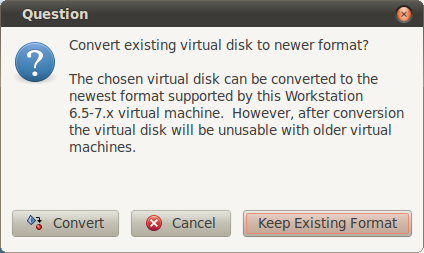
 Note that the /path/to/file.vmdk can be put anywhere, though it's a good idea to store this in the guest VM folder such as ~/VirtualBox VMs/guest-vm/sdcard.vmdk. Now we set up VirtualBox to be aware of the raw device with the following command in the Terminal. Note that you may need to unmount the volume once in a while during the next steps as I found OSX would automatically remount it at random. Open Disk Utility and "Unmount" the volume. In this particular case the s1 part represents a partition (slice) on the raw device, so the part we'll use later is just the /dev/disk2 part. In my case the "NO NAME" volume is the SD card, so I take note of the /dev/disk2s1 part. dev/disk2s1 on /Volumes/NO NAME (msdos, local, nodev, nosuid, noowners)` Map auto_home on /home (autofs, automounted, nobrowse) Map -hosts on /net (autofs, nosuid, automounted, nobrowse)
Note that the /path/to/file.vmdk can be put anywhere, though it's a good idea to store this in the guest VM folder such as ~/VirtualBox VMs/guest-vm/sdcard.vmdk. Now we set up VirtualBox to be aware of the raw device with the following command in the Terminal. Note that you may need to unmount the volume once in a while during the next steps as I found OSX would automatically remount it at random. Open Disk Utility and "Unmount" the volume. In this particular case the s1 part represents a partition (slice) on the raw device, so the part we'll use later is just the /dev/disk2 part. In my case the "NO NAME" volume is the SD card, so I take note of the /dev/disk2s1 part. dev/disk2s1 on /Volumes/NO NAME (msdos, local, nodev, nosuid, noowners)` Map auto_home on /home (autofs, automounted, nobrowse) Map -hosts on /net (autofs, nosuid, automounted, nobrowse) 
You'll see output identifying the mounted volume from your SD card. Identify the raw disk block device on your host system This will lead to severe data corruption.Īs a quick guide these are the steps to attach the device to a linux VM:

Most importantly, do not attempt to boot the partition with the currently running host operating system in a guest. Incorrect use or use of an outdated configuration can lead to total loss of data on the physical disk. Warning - Raw hard disk access is for expert users only. Full documentation is in the Advanced Storage Configuration section of the VirtualBox documentation. Because of this you'll need to attach the raw device to the VM in order to gain raw access to the whole card. On newer MacBook Pro's the SD card slot is no longer exposed as a USB device.







 0 kommentar(er)
0 kommentar(er)
